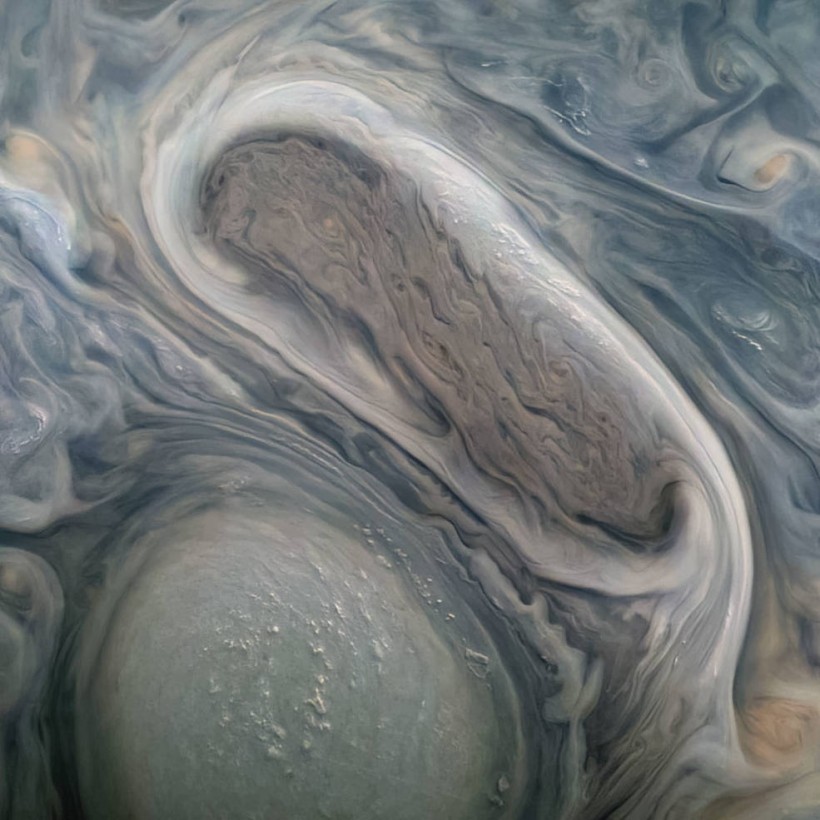NASA's Juno spacecraft captures an audio recording of Ganymede, and the space agency shared it for the rest of the world to know. The clip captures what sounds Ganymede makes on its everyday rotations around the Sun, serving as the natural satellite to the enormous gas planet of the Solar System. It shows a remarkable comparison of the Earth and Jupiter.
NASA Juno Spacecraft captures Ganymede Sound; what is it?

This JunoCam image shows two of Jupiter's large rotating storms, captured on Juno’s 38th perijove pass, on Nov. 29, 2021.
NASA's Juno Spacecraft captured the sound of Ganymede that focuses on its flyby mission, bringing knowledge to the largest moon of Jupiter and the Solar System. The audio track was taken from the recent flyby mission of NASA Juno in Jupiter's vicinity, creating a sound astounding to the researchers of the planet and its team.
The sound made by Ganymede is not something that humans would understand if listening to plainly, but scientists gathered a lot of information that says a lot about the moon and the planet of Jupiter. Other data include Jupiter's close flyby missions that say a lot about the planet and the moon, describing its magnetic fields.
NASA: Jupiter and Earth's Oceans, Atmospheres Have Similarities
According to NASA, Jupiter and Earth's oceans and atmospheres have similarities to each other, as discovered by the Juno spacecraft in its flyby missions. The different relationships of the planets in the Solar System bring a lot of information to its origins, especially as it is still a piece of debated information regarding the start of this universe.
NASA's Discoveries in its Past Missions
NASA made great discoveries this year and on its past missions. It helped bring more knowledge to the great beyond and contribute to more information that people can use to further their learnings on space. This year, one massive milestone for NASA was with the Parker spacecraft, which made history for being the first to touch the Sun's surface.
The space agency also provides tools to help discover new space objects, including floating asteroids near the planet, with NASA's "Eyes on Asteroid" tool. The Hubble space telescope also contributed by finding a new galaxy that adds to the many discoveries for deep space and extraterrestrial information.
Ganymede is a massive player in the space industry today. It remains the largest moon in the Solar System, having a significant relationship with Jupiter as its many moons. NASA's Juno remains the top spacecraft to probe and investigate Jupiter, bringing complete information to humans regarding the giant planet in this system.
Related Article: NASA's Mars Ingenuity Helicopter Reaches New Milestone-30 Minutes Afloat on Red Planet
This article is owned by Tech Times
Written by Isaiah Richard








